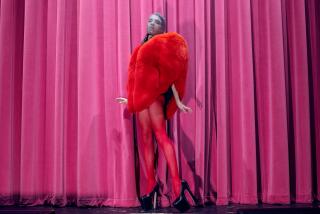A French region’s first-class glass
On a recent trip to the Alsace-Lorraine area in northeast France, I was hoping to stop at the new Musée Lalique in Wingen-sur-Moder, 28 miles outside Strasbourg and half a mile from the main Lalique factory. The museum, created from a former glassworks built in 1715, will be the first in Europe dedicated to the work of glass and crystal designer René Lalique. Unfortunately, the museum had pushed its opening date to July 2. The crystal lining? I discovered an entire world of renowned French glass.
Towns here along the border with Germany have been known for their glassmaking since the Middle Ages. The Centre International d’Art Verrier, or Center for International Glass Art, in the German-sounding town of Meisenthal, was founded in 1992 in the factory where Emile Galle created Art Nouveau glass in the last decades of the 19th century.
Our guide at the center told us that glassmaking requires wood, water, sand and something, such as local forest ferns, that can be burned into potash to cool silica’s melting point. Because these ingredients were available nearby, soon-to-be-legendary glassmakers — Galle, Lalique, the Daum family and Louis-Joseph de Laval-Montmorency, who founded Baccarat — all set up shop in the area roughly within 100 miles of one another.
The tour leads visitors through the complicated steps of creating works of glass, both molded and hand-blown. In seats high above the furnaces, we watched a glass blower insert a long hollow pipe into a slab of glowing orange glass and blow a fragile bubble.
Re-centering it on a second pipe, he dipped the bubble into powdered cobalt and twirled a delicate swirl of ultramarine around its rim. “Quickness is a priority,” the guide told us, “and strength.” The finished vase was clipped from its pipe and then set to cool slowly in an oven at low heat.
The process had taken only 15 minutes, which meant I had enough time to visit the shop where I bought a lavender glass Christmas ornament shaped like a cluster of Alsatian grapes.
We left Meisenthal and drove south toward Obernai on winding roads along the sides of the Vosges Mountains. The tiny towns along the way had German names and French signposts, a reminder that the region had been fought over by these two nations for centuries. We stopped for lunch in La Petite Pierre at Le Lion d’Or, once an old coaching inn. Our Alsatian meal — a fusion of French and German cuisine — featured smoked salmon stuffed with vegetables and chicken stuffed with ham and cheese.
A short drive from the restaurant, the Musée du Cristal Saint-Louis, in Saint-Louis-lès-Bitche, is known for its crystal, chandeliers and engraved two-color glass. The factory was founded in 1767 on the site of a glassworks that dated to 1586. We missed the public tour, so we headed 70 miles north to Nancy, a beautiful UNESCO World Heritage Site city. In its center is the Musée de l’École de Nancy with an extensive collection of Daum and Galle glass.
After the 1870 Franco-Prussian War, Jean Daum, an impoverished French lawyer, fled to Nancy, where he and his sons turned a failing glass business into one of Europe’s premier glassworks. In the museum basement, surrounded by the massive foundations of the town’s medieval walls, is a stunning sea of colored glass pieces displayed on shelves and hung from the ceiling.
Our last stop on our glass tour was 29 miles away in the historic town of Metz. Here in the Gothic cathedral, Marc Chagall created a series of stained-glass windows in brilliant yellows, blues and reds that put a modern twist on the ancient art. The setting sun was streaming through the colors making patterns on the ancient stone. I loved it — my crystal lining had become multihued.
More to Read
Sign up for The Wild
We’ll help you find the best places to hike, bike and run, as well as the perfect silent spots for meditation and yoga.
You may occasionally receive promotional content from the Los Angeles Times.






